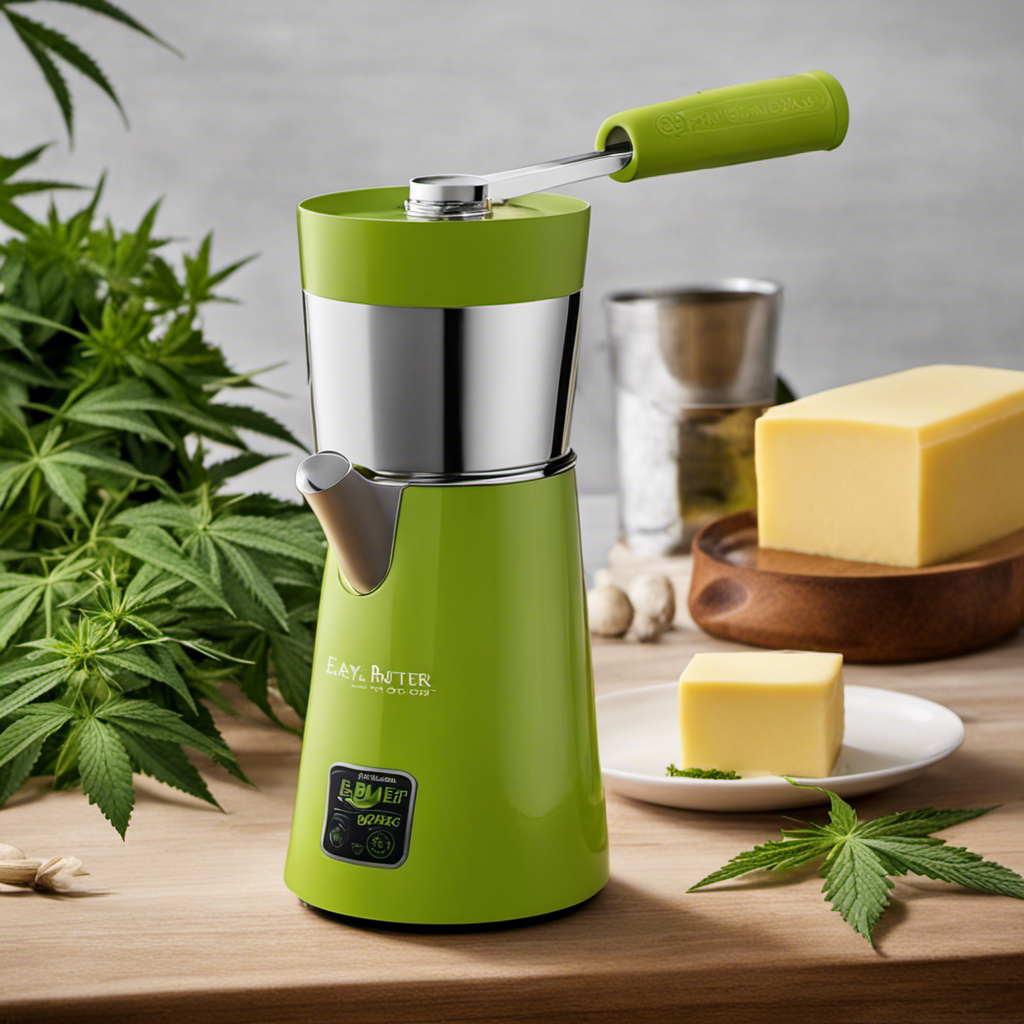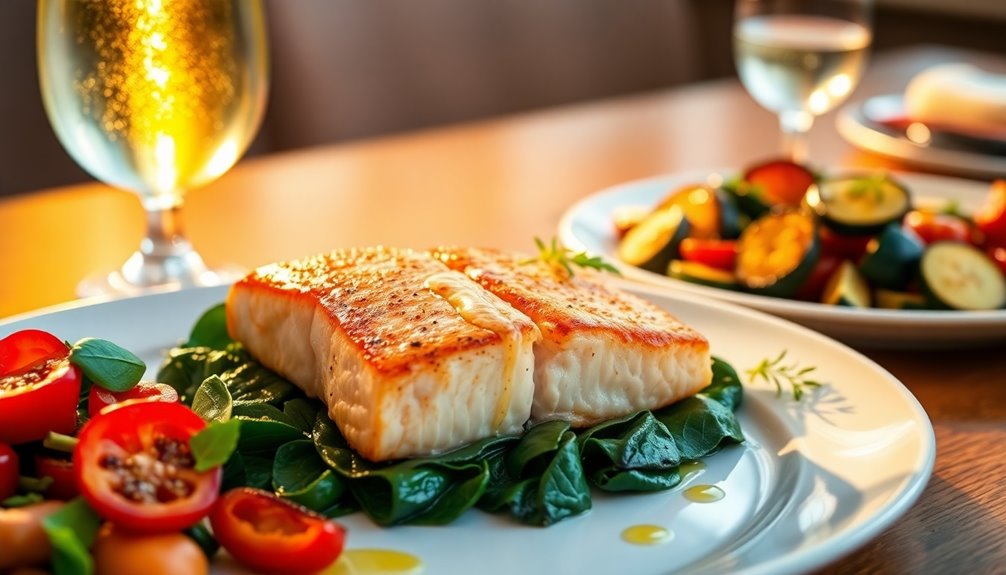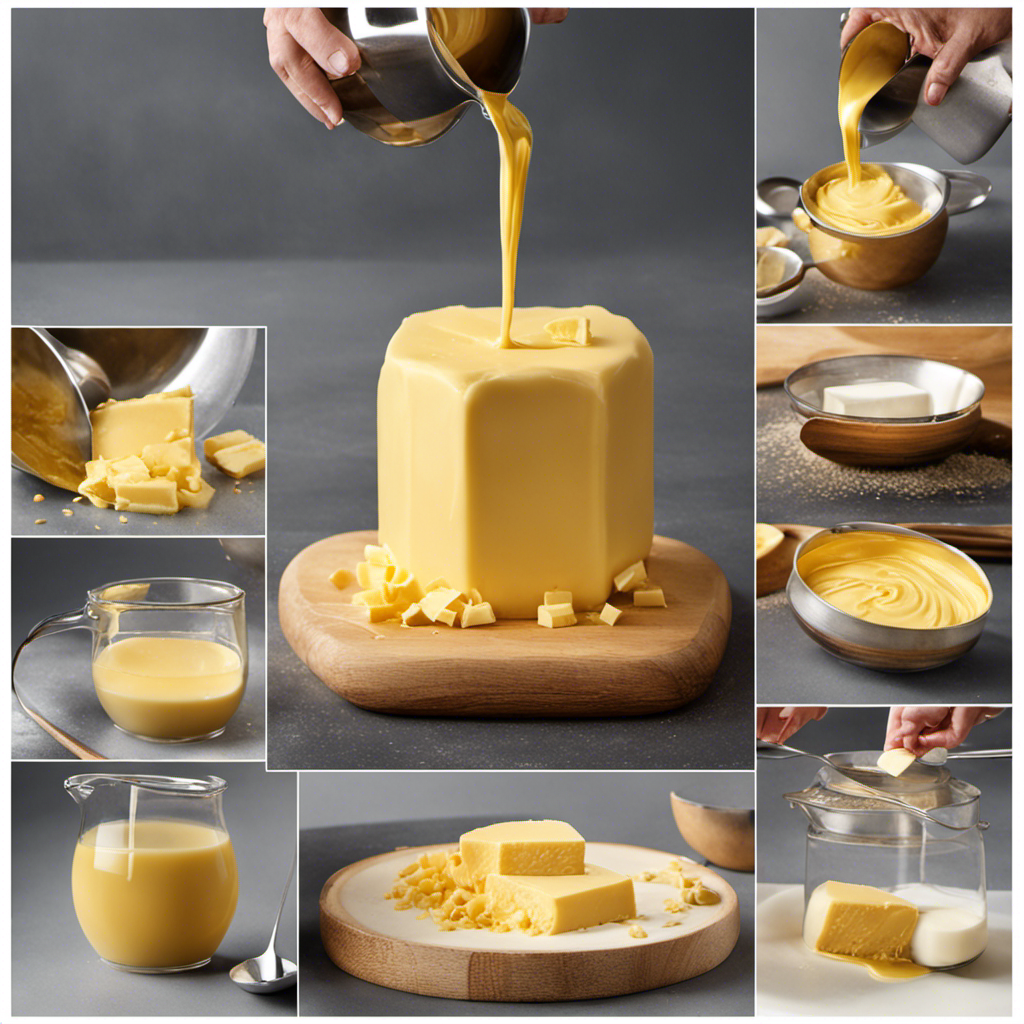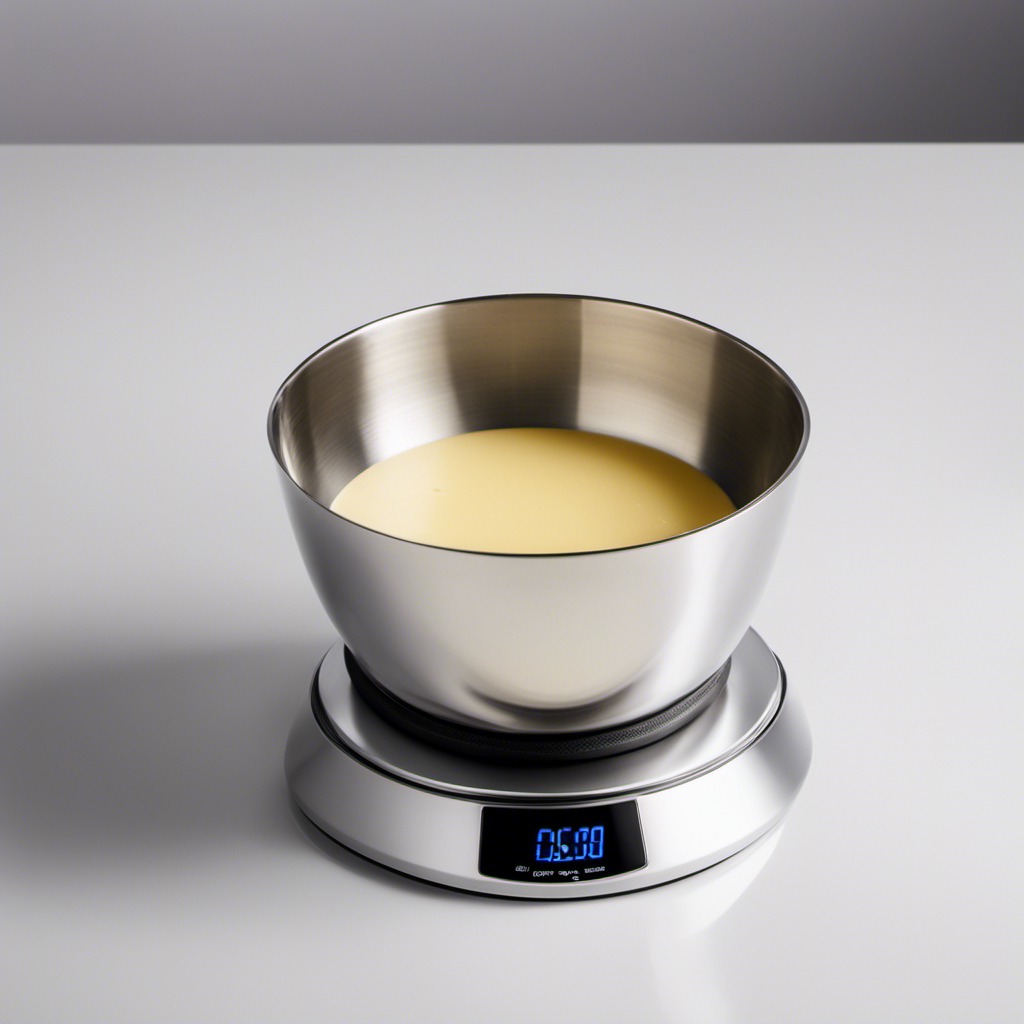Hello there!
Have you ever wondered how much salt is lurking in that pound of butter sitting in your fridge? Well, let’s dive in and find out!
In this article, we’ll explore the sodium content in butter and why it’s important to understand. We’ll also break down how salt is incorporated into butter production and examine the variations in salt levels among different types of butter.
So, if you’re ready to butter up your knowledge on this topic, let’s get started!
Key Takeaways
- Understanding the sodium content in butter is important for making informed dietary choices and monitoring salt intake for better health.
- Salt is added to butter during production to enhance flavor, preserve quality, and extend shelf life.
- Salt enhances the flavor of butter by balancing its richness and adding a savory note, while also inhibiting the growth of bacteria and molds.
- It is recommended to use around 1/4 teaspoon of salt per pound of butter, but alternatives like herbs and spices can also be used for flavoring.
The Importance of Understanding Sodium Content in Butter
You should know the importance of understanding the sodium content in butter. As a nutritionist, it’s my duty to provide accurate and factual information based on scientific research and data.
When it comes to butter, incorporating salt can have implications for our health. Salt is commonly added to butter for flavor enhancement and preservation. However, excessive consumption of sodium can lead to high blood pressure, which is a risk factor for heart disease.
It is important to be aware of the sodium content in butter and to make informed choices about our dietary intake. In the next section, I will explain how salt is incorporated into butter production, further highlighting the impact it has on our health.
How Salt Is Incorporated Into Butter Production
Salt plays a crucial role in the production of butter. It influences its flavor, texture, and shelf life. During the butter-making process, salt is added to the cream before churning. This enhances the butter’s taste and preserves its quality by acting as a natural preservative.
Incorporating salt into butter requires precise measurements. This is done to ensure consistency and to achieve the desired level of saltiness. The amount of salt used can vary depending on regional preferences and culinary applications.
Salt’s Role in Butter
The role of salt in butter is to enhance its flavor and preserve its freshness. Salt acts as a flavor enhancer, bringing out the natural richness and complexity of butter. It balances the sweetness and adds a savory note that makes butter taste even more delicious.
Additionally, salt inhibits the growth of bacteria and molds, extending the shelf life of butter. However, for individuals watching their sodium intake or looking for salt alternatives, there are options available.
Some salt alternatives include using herbs and spices to add flavor, or opting for unsalted butter and seasoning it as desired. It’s important to note that while salt does play a significant role in butter’s flavor and preservation, it is possible to enjoy butter without it.
Salt and Butter Production
One of the key steps in butter production involves churning cream until it reaches a solid state. This process helps separate the fat from the liquid in the cream, resulting in the formation of butter.
While salt is not an essential ingredient in butter manufacturing, it is commonly added for flavor and preservation purposes. The amount of salt added varies among butter producers, but typically ranges from 1 to 3 percent of the butter’s weight.
It is important to note that salt consumption should be moderated, as excessive sodium intake can contribute to health issues such as high blood pressure. Therefore, individuals should be mindful of their overall salt consumption and consider opting for unsalted butter if they are watching their sodium intake.
Incorporating Salt Into Butter
When making butter at home, you can add a small amount of salt for flavor. Incorporating salt into butter can enhance its taste and make it more enjoyable to consume. However, it’s important to be mindful of the amount of salt added, especially if you’re trying to reduce your salt intake. Here are some key points to consider:
- Salt enhances the flavor of butter by balancing its richness.
- Adding a pinch of salt can help bring out the natural flavors of the butter.
- It is recommended to use a small amount of salt, such as 1/4 teaspoon per pound of butter, to avoid overpowering the taste.
- Remember that salt is not the only way to add flavor to butter. You can also experiment with herbs, spices, or citrus zest.
Determining the Average Salt Content in Commercial Butter Brands
To figure out the average salt content in commercial butter brands, you can use a simple calculation.
Salt plays a crucial role in butter production, not only for its flavor-enhancing properties but also for its preservative effects. Adding salt to butter helps to balance its taste by reducing the sweetness and enhancing the richness.
The impact of salt on butter flavor can vary depending on the amount used. It is important to note that the salt content in commercial butter brands may differ from one brand to another.
Exploring variations in salt levels among different butter types allows us to understand the range of choices available to consumers and make informed decisions based on personal preferences and dietary needs.
Exploring Variations in Salt Levels Among Different Butter Types
When it comes to butter, the level of salt can vary significantly between different types and brands.
As a nutritionist, I strive to provide accurate and reliable information about food.
In this discussion, we will explore the differences in salt content among various butter types and how it can impact our overall health.
Salt Differences in Butter
You’ll notice differences in the amount of salt present in various brands of butter. The salt content in butter can vary due to different factors during butter production.
Here are some key points to consider:
- The salt content in butter is generally measured in percentages, ranging from unsalted butter (0% salt) to salted butter (typically around 1-2% salt).
- Salt is added to butter for flavor enhancement, preservation, and texture improvement.
- The salt is usually added during the churning process, where it helps to separate the butterfat from the buttermilk.
- Some brands may offer low-sodium or reduced-salt options for those who prefer less salt in their butter.
It’s important to read the labels and choose the butter that best suits your dietary needs and preferences. Understanding the variations in salt content can help you make informed decisions about your butter choices.
Butter Types and Salt
If you’re watching your sodium intake, consider opting for unsalted butter as it contains no added salt. When it comes to butter varieties, there are two main options: salted and unsalted. The table below provides a comparison of the two:
| Butter Variety | Sodium Content (per 1 tablespoon) |
|---|---|
| Salted Butter | Approximately 90 milligrams |
| Unsalted Butter | 0 milligrams |
As you can see, salted butter contains a significant amount of sodium, which may not be suitable for those on a low-sodium diet. However, if you still want to enjoy the flavor of butter without the added salt, there are alternatives available. One option is to use unsalted butter and season your dishes with herbs and spices instead. Another alternative is to try plant-based spreads that are made without added salt. These options can help reduce your overall sodium intake while still adding flavor to your recipes.
Now, let’s explore some tips for reducing salt intake when using butter in recipes.
Tips for Reducing Salt Intake When Using Butter in Recipes
To reduce salt intake when cooking with butter, it’s important to choose unsalted butter. This way, you have control over the amount of sodium in your dishes. Here are some tips for reducing sodium when using butter in recipes:
-
Opt for unsalted butter: Choose unsalted butter instead of salted butter to minimize sodium intake.
-
Use herbs and spices: Enhance the flavor of your dishes with herbs and spices instead of relying on salted butter for seasoning.
-
Try butter alternatives: Consider using alternatives like olive oil, coconut oil, or avocado oil in recipes that call for butter.
-
Read labels: When buying butter or butter alternatives, check the labels for sodium content and choose options with lower sodium levels.
Understanding the Health Implications of Consuming Excessive Salt in Butter
Consuming excessive salt in butter can have negative health implications such as increased risk of high blood pressure and cardiovascular diseases. As a nutritionist, I want to provide accurate and factual information on this topic.
Salt is commonly added to butter for flavor and preservation purposes. However, it is important to understand the potential health risks associated with high salt intake. Excessive salt consumption can lead to water retention, which increases blood volume and puts pressure on the blood vessels. This can result in hypertension and increase the chances of developing cardiovascular diseases.
It is recommended to limit salt intake to less than 2,300 milligrams per day, and even lower for individuals with certain health conditions. Understanding salt intake and its impact on health is crucial for making informed choices about butter consumption.
Frequently Asked Questions
How Many Grams of Salt Are in a Pound of Butter?
On average, a pound of butter contains about 1.5 grams of salt. This amount may vary depending on the brand and type of butter. It’s important to consider your recommended daily intake of salt and how it may affect the flavor of the butter.
What Is the Recommended Daily Intake of Sodium for Adults?
The recommended daily intake of sodium for adults is 2,300 milligrams. Consuming too much salt can lead to high blood pressure and an increased risk of heart disease. It’s important to be mindful of our sodium intake for optimal health.
Can the Salt Content in Butter Vary Between Different Batches of the Same Brand?
The salt content in butter can vary between different batches of the same brand, which can impact the flavor. This variation is due to differences in the manufacturing process and the amount of salt added during production.
Are There Any Health Benefits to Consuming Salt in Butter?
Consuming salt in butter may not have significant health benefits. There are alternative salt-free options available that can be healthier choices. It’s important to consider the health implications and explore these alternatives.
Is It Possible to Make Butter Without Adding Any Salt?
It is possible to make unsalted butter by simply omitting the addition of salt during the churning process. Alternatively, you can explore using alternative flavorings such as herbs or spices to enhance the taste of the butter.
Conclusion
In conclusion, understanding the sodium content in butter is vital for maintaining a healthy lifestyle. By exploring how salt is incorporated into butter production and determining the average salt content in commercial brands, we can make informed choices about our butter consumption.
It is crucial to be aware of variations in salt levels among different butter types and to reduce salt intake when using butter in recipes. By understanding the health implications of excessive salt consumption, we can make better choices for our overall well-being.
So, let’s be mindful of our butter choices and prioritize our health.









